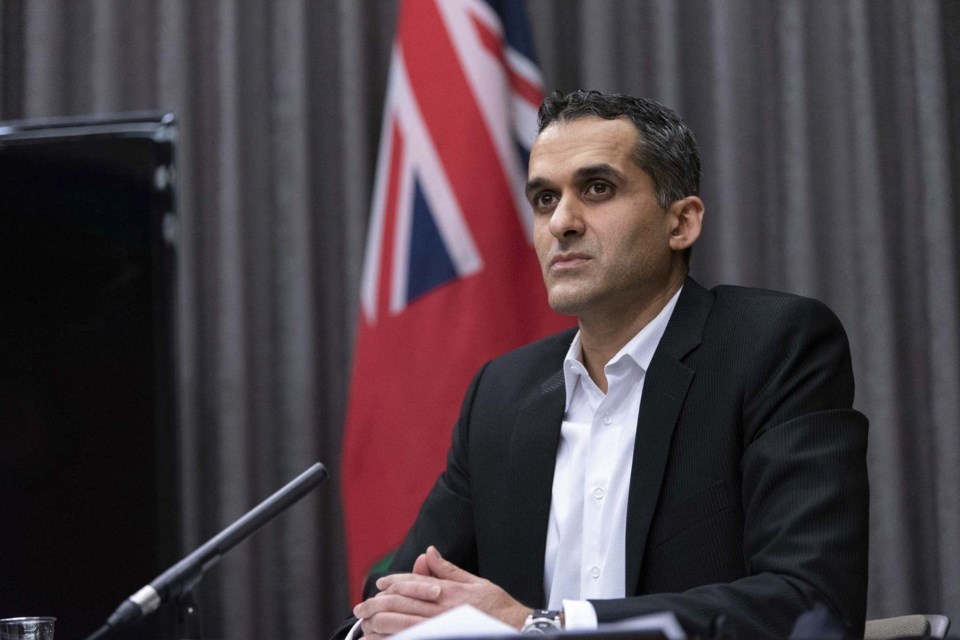The number of Manitobans in hospital due to COVID-19 has topped 100, the provincial government’s coronavirus website showed Nov. 3.
There were 106 patients in hospital as a result of the virus Wednesday, including 23 in intensive care. Included among the hospitalized Manitobans were 15 northern residents, three of whom were in intensive care.
The number of new infections was also in triple digits Nov. 3, with 128 new cases in the province, 80 of them affecting people who are not fully vaccinated against COVID-19.
About a quarter of those new cases – 33 – are in the north, which has seen 59 cases of the coronavirus confirmed by laboratory tests in the first two days of November. There are more than 480 active infections in the north, including 241 in the Norway House health district, 143 in the Pukatawagan/Mathias Colomb health district, 53 in the Shamattawa/York Factory/Tataskweyak/Split Lake health district and 21 in the Bunibonibee/Oxford House/Manto Sipi/God’s River/God’s Lake district. All four of those districts saw the number of active cases rises since Nov. 1. There are currently four active cases in the Thompson/Mystery Lake health district, five fewer than there were on Monday.
Three more Manitobans, none of them from the north, have died from COVID-19 in the past two days. Since the pandemic began, 1,251 Manitobans have died as a result of the virus.
The provincial test positivity rate on Wednesday was 4.9 per cent, though it is much higher in some health regions according to provincial date, surpassing 14 per cent in the southern health region and approaching 8 per cent in the north.
Deputy chief public health officer Dr. Jazz Atwal said at a Nov. 3 press conference that information about regional test positivity rates, which has only been made available occasionally and on a case-by-case basis until now, will be available and updated biweekly on the provincial government’s COVID-19 website as of Nov. 5, though he cautioned putting too much faith in this data.
“The test positivity rate can be highly variable, particularly in regions with smaller populations and are based on the number of tests conducted in that region which can be impacted by active outbreaks in the area,” Atwal said. “This means test positivity rates for rural regions may not be comparable to the overall provincial rate or the Winnipeg rate.”
He also reminded Manitobans that it is difficult to distinguish between a cold and COVID-19 and that the only way to be sure is to get tested, noting that many teachers have reported sending home students who came to school with possible COVID-19 symptoms and that seriously ill people with COVID-19 who have not been tested are showing up at emergency rooms or other medical facilities for treatment.
"They have been out and about in their communities and social circles sick and symptomatic, spreading the virus,” said Atwal.
67 per cent of people with active COVID-19 cases in Manitoba are not fully vaccinated. Among those in hospital with active infections, the percentage who are not fully vaccinated is 74 per cent of those in intensive care, 94 per cent are unvaccinated as of Nov. 3.
Recommendations for third doses of vaccine have been expanded to included all First Nations, Inuit and Métis adults on and off reserve, said vaccine task force medical lead Dr. Joss Reimer, provided six months have passed since their second dose. Third doses are also recommended for Manitobans aged 70 and older. The National Advisory Committee on Immunization (NACI) has changed its recommendation for the spacing between first and second doses of the vaccine from four weeks to eight weeks, Reimer said. Manitoba is still awaiting word from NACI and Health Canada about whether COVID-19 vaccines will be approved for use among five to 11-year-olds.
Dr. Marcia Anderson of the First Nations Pandemic Co-ordination Team said data has shown that First Nations people are disproportionately affected by COVID-19, with infection rates 4.2 times as high as the general population’s as of mid-October and have a higher risk of severe outcomes, due in part to the fact that there are more First Nations people over the age of 20 with at least one underlying medical condition than there are in the population at large.
Looking ahead to next week, Atwal said Remembrance Day ceremonies can proceed with a maximum of 25 participants at indoor services and 50 at outdoor ceremonies if proof of vaccination is not required. There is no limit on how many people can attend events where proof of vaccination is required.



